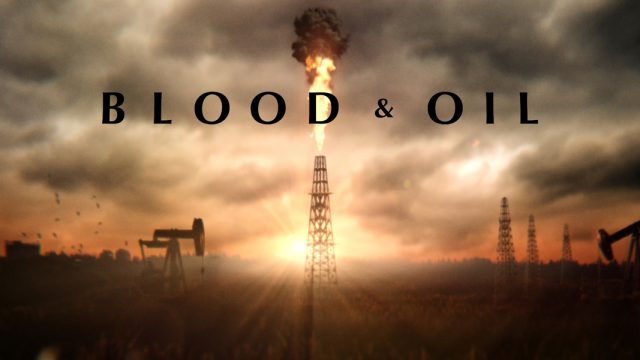Subsidies Can't Fix What's Wrong With ABC's 'Blood & Oil'
Some say subsidies for the entertainment industry can fix inaccurate representations of North Dakota in movies and television shows.

Mountains … in North Dakota?
That was the question no doubt going through the minds of many people in the state when ABC’s new drama “Blood & Oil” premiered last week to modest ratings. The show is ostensibly set in North Dakota’s Bakken oil fields, though it’s hard to tell, given the snowcapped peaks of the Rocky Mountains looming in the background of exterior shots.
The Rockies, in case you needed an update on your geography, reside hundreds of miles to the west of North Dakota.
There were other guffaw-worthy moments for North Dakotans in the show’s first episode. A character killed a white moose at one point — moose aren’t at all common on the prairies of North Dakota — and a scene depicting two characters wrestling in jet black oil was downright incongruous.
North Dakota’s famously light, sweet crude oil is amber in color.
But people just can’t get over those mountains.
“Obviously, the show’s creators haven’t been to Williston,” Howard Klug, mayor of the town that was the inspiration for community depicted in the show, told Reuters.

The creators have been to Utah, though, which they chose as the stand in for North Dakota. But why on Earth would anyone choose mountainous Utah to stand in for a plains state like North Dakota?
Turns out it’s all about money. Utah offers filmmakers a 25 percent tax rebate. For filming “Blood & Oil” in that state, the Utah Film Commission gave the show’s creators an $8.34 million tax credit.
North Dakota, on the other hand, offers filmmakers exactly nothing. Which is why some in the state think subsidies could fix “Blood & Oil’s” scenery problem.
“Sara Otte Coleman, director of the tourism division of the North Dakota Department of Commerce, said filming location often comes down to state-sponsored incentives,” the Fargo Forum reports.
“Most states have gone away from that being the motivation and gone more towards the economic development and the spending of the production being the focus,” Otte Coleman said.
But would handouts for Hollywood be the right fit for North Dakota? The state’s experiences in the past haven’t been positive. In 1999, “Wooly Boys,” a movie starring Peter Fonda and Kris Kristofferson, was filmed in North Dakota with an assist from a $3.9 million loan from the state. The movie was a flop, and by 2006 the Bank of North Dakota was writing off $1.66 million of that loan.
Despite the bad experience, some are still trying to get North Dakota into the subsidies game. In two companion bills introduced in the state Legislature earlier this year Rep. Marie Strinden. a Democrat from Grand Forks, proposed big state subsidies for the movie industry. In HB1420, Strinden called for tax credits for movie productions that pay an application fee and are certified by the state. In HB1422, Strinden called for a $170,000 appropriation to the Department of Commerce to promote North Dakota as a filming location.
Both bills failed in the state House by roughly 2-1 vote margins, making it seem likely that North Dakota isn’t going to get into the entertainment business any time soon.




